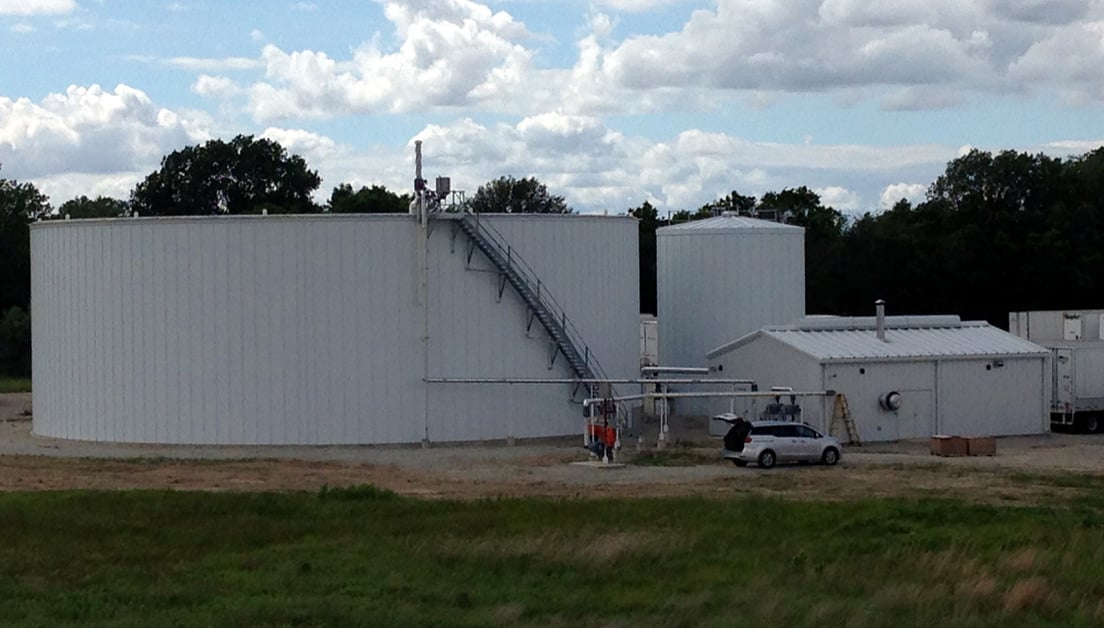Pinnacle Foods is a leading producer of quality branded food products, which can be found in 85 percent of American households.
Challenge
Pinnacle Foods’ plant in St. Elmo, Illinois, USA, manufactures Mrs. Butterworth’s® and Log Cabin® syrups, and Open Pit® barbeque sauces. When Pinnacle Foods acquired the Wish Bone® and Western® salad dressing businesses, its St. Elmo plant needed to re-evaluate its approach to wastewater treatment.
The company was treating the syrup wastewater aerobically in an aerated lagoon, but the lagoon was unable to treat the increased flow of wastewater so that it could meet effluent limits. In order to successfully expand, Pinnacle Foods needed a proven technology that could treat combined wastewater from the syrup and salad dressing production lines.
Solution
ADI Systems was selected by Pinnacle Foods for the wastewater treatment expansion project at the St. Elmo facility. ADI Systems designed and built an ADI-BVF® reactor to effectively pre-treat the combined wastewater streams. The low-rate anaerobic technology was constructed in a space-saving above-ground tank sized to handle wastewater from Pinnacle Foods’ various production lines.
The wastewater treatment system that ADI Systems engineered for Pinnacle Foods includes:
- Insulated, covered equalization (EQ) tank
- Insulated, covered BVF® reactor
- Biogas collection, transmission, utilization, and flaring system
A carefully designed influent distribution system provides increased contact between the substrate and the biomass, ensuring proper treatment performance. The reactor is heated by an on-site dual fuel (biogas and natural gas) boiler to approximately 95°F (35°C) to ensure that the fat, oil, grease (FOG) breaks down and does not accumulate under the reactor surface.
Results
The BVF reactor at Pinnacle Foods’ St. Elmo plant not only produces a high-quality effluent, it has also decreased sludge generation, lowering costs associated with sludge disposal. The exceptionally long solids retention time allows for greater flexibility for sludge wasting.
The BVF reactor is easy to operate, offers excellent process stability, and has low operating and maintenance costs. It results in much lower chemical oxygen demand (COD), biochemical oxygen demand (BOD), and total suspended solids (TSS) loading on Pinnacle Foods’ existing aerobic lagoon system. Effluent from the BVF reactor flows by gravity to the existing aeration lagoon for final polishing prior to being discharged to the publicly owned treatment works (POTW).

The wastewater treatment system is designed to treat 8,500 lb (3,900 kg) of COD per day, and will generate 67,000 ft3/d (1,900 m3/d) of biogas at design. Biogas generated from the anaerobic system is collected and utilized in a new boiler at the treatment plant to provide heat to the anaerobic reactor to maintain the system temperature.
*All trademarks are those of their respective owners.